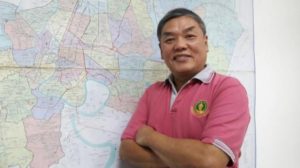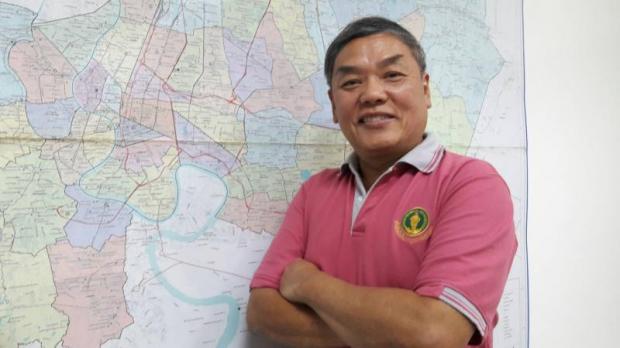
Bangkok’s City Planning Department will allow the transfer of development rights and give additional construction space to buildings that remove fences for public use. The move is aimed at encouraging land utilisation and improving the city’s liveability.
Vanchai Thanomsak, director-general of City Planning Department for the Bangkok Metropolitan Administration (BMA), said the transfer of development rights will give landowners the ability to waive the right to develop their land and to transfer those rights to others that may need more space for construction.
“The development rights can be sold, depending on both parties [giver and receiver of the right transferred],” he said. “We are studying which areas should be considered and what incentives should be given to those who are receiving the development rights.”
Areas where the transfer of development rights should be allowed are those were such rights are limited, for instance, green-white zones where development and construction areas are restricted, or areas surrounding the old town area — Rattanakosin Island — where the building of high-rises is prohibited.
He said landowners in these areas were at a disadvantage and should be compensated as their land could not be fully utilised.
“Some landowners may not want to utilise their land to the fullest. Their plots may allow for the construction of high-rise buildings but they only want to build houses. They can make money from the difference between the development rights that they have and those that they actually use,” said Mr Vanchai.
Other areas that should be open to the transfer of development rights should include those where land prices are very high, like the central business district, Chidlom, Asok or Sukhumvit, he said.
“It will be mutually beneficial. Landowners who transfer development rights will get money while those who get the transfer will get more space for construction,” said Mr Vanchai.
To promote the transfer of development rights, the BMA will consider giving incentives like temporary land and building tax waivers for construction areas received from the transfer of development rights.
Issara Boonyoung, honorary president of the Housing Business Association, said the transfer of development rights would benefit developers as they would have either more space for construction or lower development costs as land prices continue to soar.
“When the land and buildings tax goes into effect, people who have houses in locations where land appraisal prices are very high will be less burdened by high tax rates, as they will be able to make money from the transfer of development rights,” he said.
Meanwhile, Mr Vanchai said the BMA would also give additional construction space to buildings that removed their fences for public use.
“In Bangkok, there are a lot of small roads and sois that are mostly narrow. It would be a positive for any building to remove its fence and open up a wider space for public use, including pedestrian traffic, as some pavements are too small,” he added.
Surachet Kongcheep, associate director of property consultant Colliers International Thailand, said giving bonus construction areas to buildings that remove their fences was a good idea for commercial projects like offices and retailers, which serve a public function.
According to the BMA, the non-registered population in Bangkok more than doubled from 6 million in 2011 to 12.3 million this year, while the registered population dropped to 5.7 million from 6.1 million last year — a change likely explained by the 300,000 spike seen in the registered population of Nonthaburi.
Those figures do not include the 3 million foreign expats living in the Bangkok metropolitan area, the 400,000 foreign labourers from Asean nations and the 1-2 million students from other regions studying in the capital.
“The Bangkok metropolitan area has undergone a lot of changes in terms of growth, transportation, the economy, society and the population. City planning needs to catch up with them,” said Mr Vanchai.
Source: http://property.bangkokpost.com/news/1061748/bma-moves-to-help-utilise-bangkok-land


